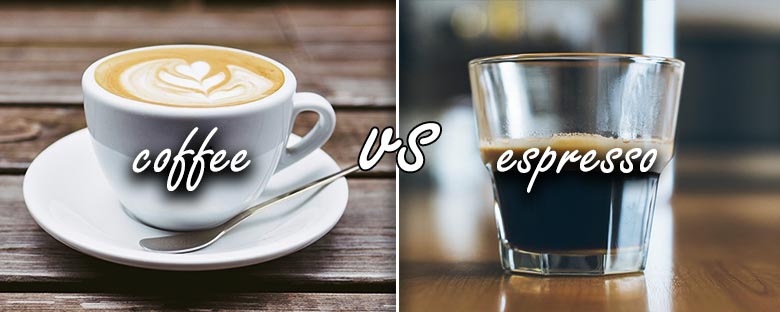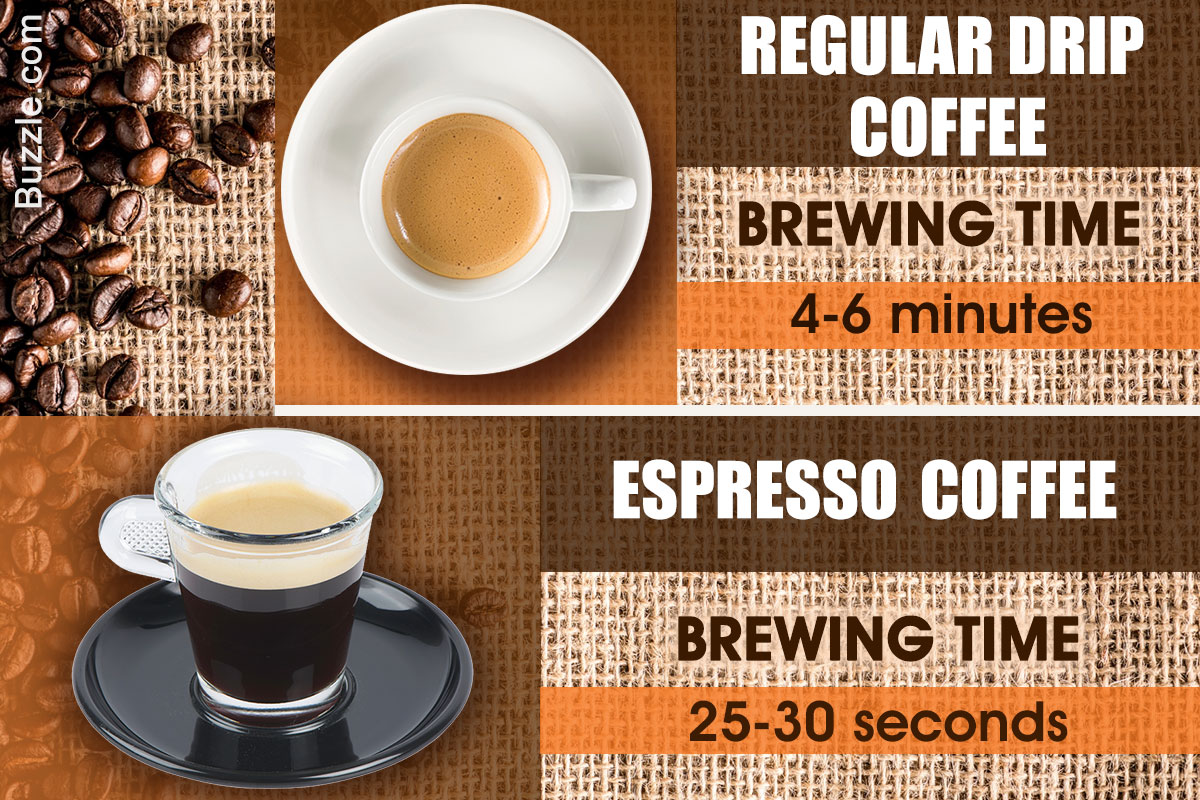Table of Contents
*This post may contain affiliate links. As an Amazon Associate we earn from qualifying purchases.
Coffee is one of the most consumed beverages in the world, next to water. For most people, it is a part of their morning ritual. Often, the choice is limited to brewed coffee or espresso-based beverages. These are the two most popular coffee beverages. This gets us thinking, do you know how they differ from one another? Is there even a difference between espresso and coffee?
In this blog post, we’ll take a closer look at espresso vs coffee. As we dive into the world of coffee, it makes sense for us to understand the difference between these well-loved beverages. Knowing the differences and similarities between the two will help you understand the type of drink that is right for you. Plus, you’ll sound smart when talking about coffee and espresso in a crowd of coffee enthusiasts.
Flavor
Coffee is full of sugar, oils, and intricate flavors. The flavor of coffee depends largely on the coffee beans you use. For instance, dark roasted Arabica delivers coffee with bold, rich flavor with a semi-sweet chocolate finish. Medium roasted Arabica, on the other hand, delivers coffee with hints of fruits, nuts, and caramel tones.
Brewed coffee, no matter how you brew it, will taste good. It produces a less intense flavor as compared to espresso.
Espresso means a highly concentrated shot of coffee. It is 4 to 6 times stronger than coffee. Because of its bold and intense flavor, most people prefer to drink it with milk (latte) or with water Americano. But some hardcore coffee connoisseurs enjoy their espresso shots straight up.
Espresso should have a thick, syrupy body with crema on top. The crema is indicative of the strength of the beverage. The darker the crema is, the stronger your espresso is. The layer of foam on top of the espresso will also tell you if the coffee is freshly roasted. The lack of crema is a clear sign that the coffee used was old.
Serving size

Image Source: www.caffesociety.co
The serving size is one of the most obvious differences between espresso and coffee. The typical serving size of an espresso shot is 1 ounce. Meanwhile, the average serving size of a cup of coffee is 8 ounces.
You can drink espresso on its own. But if you’re not used to its strong, bold flavor, you have the option to add water or milk to it. In this case, you may want to order an espresso-based beverage like a cappuccino or a latte.
Caffeine content
Caffeine is a natural stimulant that is naturally found in coffee, tea, and cacao plant. Moderate consumption of caffeine can give most people a temporary energy boost, elevate mood, and can even help you focus on the task at hand. Excessive caffeine consumption, however, can interfere with your sleep and make you anxious. Experts recommend keeping your daily intake under 400 mg to avoid such the negative side effects. Keeping track of your daily caffeine intake can be difficult, if not impossible since most people don’t know how much caffeine there is in a cup of coffee or a shot of espresso.
Most people assume that espresso has more caffeine than drip coffee. Because of its bitter taste, a lot of people think that espresso is so potent and full of caffeine and that’s why it is served in a tiny cup. But the truth is that a cup of drip coffee contains more caffeine than that of a shot of espresso. Don’t believe us? We can prove it.
When it comes to caffeine concentration, there is no doubt that espresso shots have more caffeine. In fact, a single shot of espresso contains about 40 mg of caffeine per ounce. Whereas, an average cup of coffee only has an estimated 10 mg per ounce. But if we are to compare the amount of caffeine present in each beverage, coffee wins straight up. A double shot of espresso has about 80 mg of caffeine. Meanwhile, an 8 oz cup of coffee contains about 95 – 200 mg of caffeine. The difference is in the serving size.
Espresso shots have more concentrated caffeine per ounce. But if you are to consider the serving size, you’ll get less caffeine from an espresso shot than your average 8-ounce mug of joe.
Brewing espresso vs coffee

Image Source:www.tastessence.com
All coffee must be brewed before drinking, including espresso. How you brew your coffee will have a significant effect on its flavor, nutrition, and caffeine content.
There are several ways to brew coffee. This includes French Press, standard drip, cold brew, Chemex, and single serve. But in this blog post, we’ll focus on drip coffee. Drip coffee is made by simply pouring hot water over coarsely ground coffee beans. No machine or electric power cords required. Just let gravity do its thing. The flavors are then extracted from the ground coffee as the water falls through the coffee and the filter. The entire process will take a few minutes.
There is only one way to make espresso, and that’s with the use of a specialized machine. Espresso is brewed by forcing hot water through tightly packed, finely ground coffee beans under high pressure. The entire brewing espresso will only take about 20 to 30 seconds, which is beneficial for individuals who are always on the go.
Final thoughts
While there are some differences between espresso and coffee, these two beverages offer something unique for coffee lovers to enjoy. If you want a full-flavored taste, espresso would be an excellent choice for you. But if you want something with a more balanced flavor profile, go ahead and get a cup of regular coffee. You can even enjoy both depending on your mood. It’s just a matter of personal preference.


